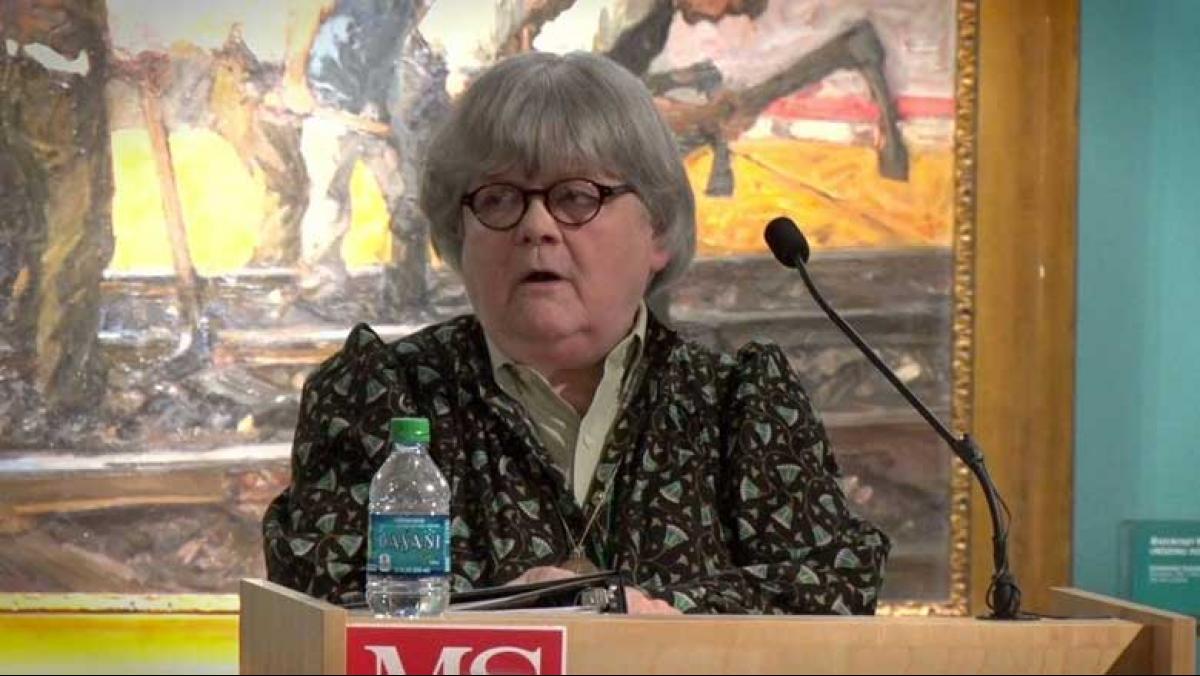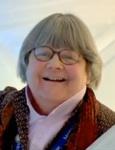How did you choose to become a museum educator?
My family wanted to take a vacation and my father took us to a dude ranch in Arizona up near Flagstaff. I was ten, and, after about one day there, I turned to my father and said, "This is where I want to come to school, and this is where I want to live." I fell in love with the mountains, the desert, the cactus and the people. I had this dream to be a veterinarian. My father's background was farming and my grandfather raised Percherons, those wonderful circus horses. And so I thought, well, maybe there is something in my blood. So, that is what I tried to pursue.
I applied to the University of Arizona in the School of Animal Husbandry and also to Texas A&M. And being very naïve and probably not reading the fine print, I didn't notice that Texas A&M was only for boys; I got a lovely acceptance letter informing me that I was the wrong sex. So I went to Arizona, which I was going to do anyway. My father knew all along this wasn't going to work. But, rather than tell me, "You can't do this," he said, "I think it would be a good idea if you went just a little bit early and talked to the dean."
So I went early, and, by good fortune, the dean was in his office. And he said, "Barbara, what is your 4–H experience?" I said the only thing I've had were pet goldfish. That's all I could have because we lived in an apartment building and there were no pets allowed. (My poor father had to take our goldfish on all our trips.) I was slowly, but surely, getting the message that I didn't belong in the School of Agriculture. I looked at the dean and I said, "Now what do I do?" He sent me to the School of Fine Arts to talk to the dean there about transferring.
The dean at the School of Fine Arts said after looking at my records that this was where I belonged and that I should pursue Art History. This made sense because my mother was trained as an art teacher and her brothers were musicians. The dean explained to me that art history is a good major, and his school was the best place to learn about everything there is to learn about in life. He also suggested that I take a course on museum studies, because the university had a beautiful gallery.
My first job was to sweep the vault! I questioned what this had to do with museum studies. I soon learned the answer to my own question since we did everything. We hung the shows. We organized them. We wrote the catalogues. We printed the invitations. We did everything. We served the punch at the openings. We gave tours. And I thought, Uh-oh! I'm bit. This is it. This is what I want to do.
What famous personalities have you taken through the museum?
Let's begin with some artists I remember touring through our collection. A few that stand out in my mind are Philip Pearlstein, Wayne Thiebaud, Georgia O'Keeffe, David Hockney, and Fernando Botero. Now world-famous, we gave Botero his first North American show. Other dignitaries I recall are Mrs. Douglas McArthur, Madame Chiang Kai Shek, Mrs. John D. Rockefeller III, Eunice Kennedy, and Alex Haley. And then of course there were a lot of theater people that came to Milwaukee to perform and wanted to tour the Museum. For instance, Ginger Rogers, Vincent Price, Tony Randall, Ray Milland (who never took his hat off because he was very bald), George Shearing, and Star Trek's Leonard Nimoy. After our tour, Leonard reached into his pocket and gave me a pointy Vulcan ear.
Do you have any stories from the early days of the museum?
We did a lot of sort of cutting edge, kooky things in the 1960s. And we had some pretty exciting moments and controversial moments. We did "happenings"—and the happenings got us into trouble. We were in the sub-basement of the War Memorial and we had Harley-Davidsons driving around in the sand, and all sorts of little pods of things going on. So, it was quite exciting. I remember Robert Rauschenberg came with a group headed by John Cage and they performed in Memorial Hall. And it was so weird. They had turtles with flashlights strapped to their shells crawling around on the floor and these bodies in gray body stockings. And Rauschenberg got himself maskingtaped to the wall and hung there like he was in sort of this weird web. I mean it was crazy. Craziness. Fun, but crazy.
What is your teaching philosophy?
First, I'm so lucky to have found something that fits me and fits what my passion is, what my love is. I've done it every day of my life. How many people can say that? This is not a job, it's a way of life. I honestly feel like I'm in a very fancy upscale chocolate shop. And it's just so wonderful to want to come to work everyday and I don't want to go home.
When somebody says, What do you do? I say I work with people from the cradle to the grave, because age is no stigma. It's just anybody who comes in here; I want them to be happy. I want them to have fun, and I want them to leave the museum wanting to come back. It's no fun to have a museum if you don't have people. The people make the museum come alive, and if they are learning, that's as good as it gets! Especially since they are learning from the originals, myself included.
We all should be focusing on teaching art to young people, the next generation of students, especially. We really need to do this. Because, no matter where they end up, hopefully they will support culture and the arts. That's why it is so important for people to come here to learn. Not only do you learn about art: you learn about politics, sex, religion, humanities, and history. You also learn about people and their cultural mores. You can talk around these objects and define a period in history by means of a costume or a trend.
So for me the best way to teach anybody anything is through art. And when students say to me, "How do you define art"? I used to spend hours trying to answer that. Now I just give them one word, life. Art is life.




